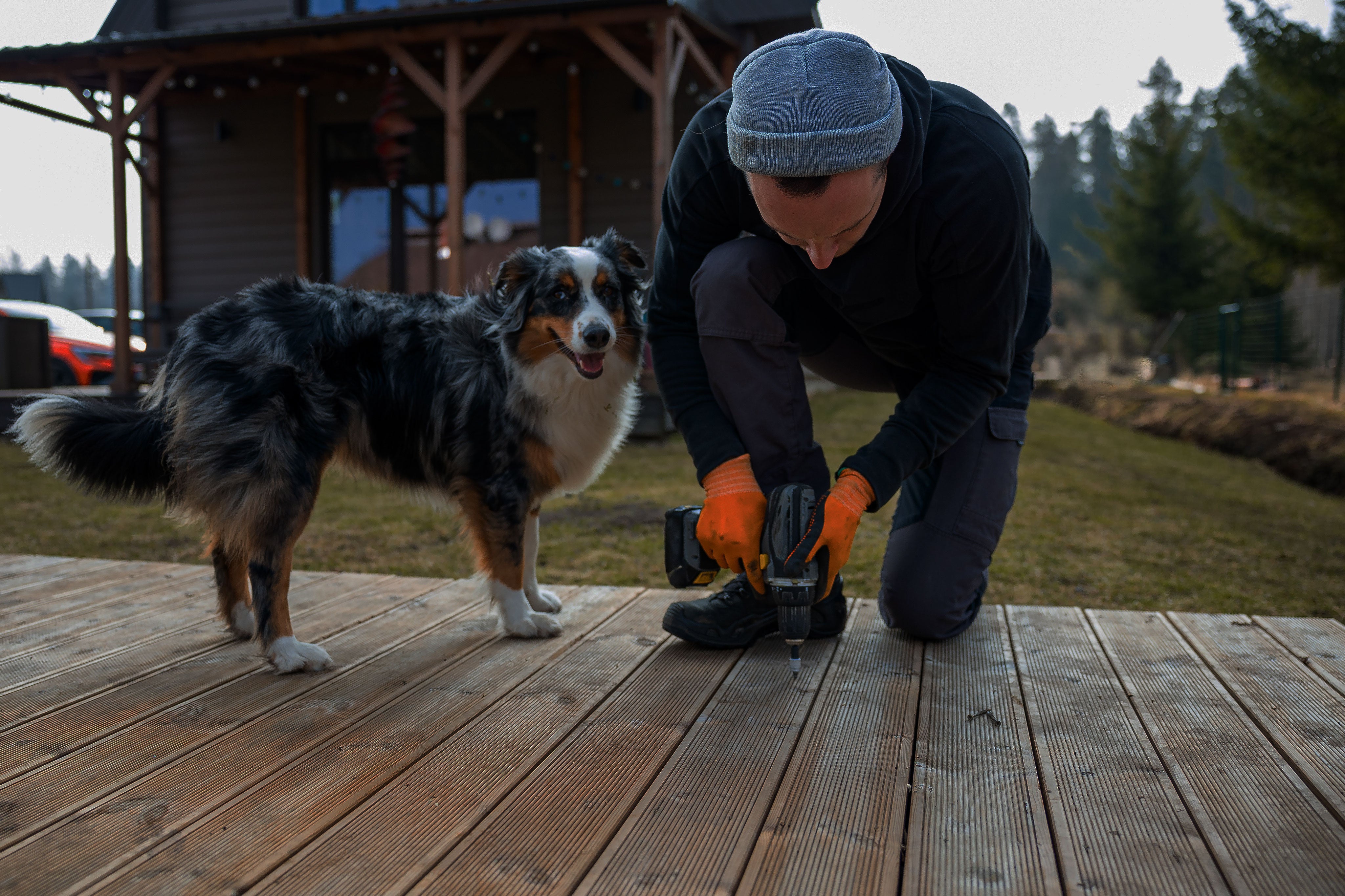
From planning and design to construction and materials, we'll walk you through every step of the process to help you create a beautiful deck.
Step 6: Select Your Materials
The Material Selections & Price section is designed to help you compare popular material options for your project. All products have a list of pros and cons and also have a price scale to get a sense of the price differences between each material. There may be alternative material options other than the ones listed below, but they are not used as commonly in Southern Ontario. Familiarizing yourself with the different materials available will help you make important decisions on the design and budget of your deck.
Choosing Deck Materials
Type of Decking Materials
Brown Pressure-Treated
Pressure-treated wood is wood that has been infused with chemical preservatives to protect the wood from rot and insects. The wood is placed in a depressurized holding tank that removes the air and replaces it with a preservative. The most important thing to understand about this pressure treatment is that the process is, by far, the best way to avoid harmful rot and insects, but does not prevent weathering and corrosion. Brown Pressure Treated wood is fade resistant and gives the wood a more natural, almost cedar-like appearance and provides excellent quality for its price.
- Offers a look similar to cedar at the cost of traditional pressure-treated lumber products.
- Sets a new benchmark for safe, high performing and beautifully treated wood.
- The first and only treated wood product to be certified as an 'Environmentally Preferable Product."
- To maintain the colour, richness and beauty of pressure-treated lumber, a high quality water repellant sealer can be applied immediately upon completion of construction.
Cedar
If rustic beauty is your look, Turkstra offers the best in Western Red cedar decking. Cedar decking is durable and doesn’t absorb moisture, so it lasts longer and doesn’t twist or split.
- Timeless beauty. Whether you choose to stain it, apply a clear penetrating oil or simply let it age naturally, Western red cedar is a look that is often imitated, but never duplicated.
- Naturally weather, rot, decay and insect resistant.
- Cedar doesn't readily absorb moisture so it tends to lie flat and stay straight.
- Cedar is a sustainable and renewable resource, F.S.C. (Forestry Stewardship Council).
- Lightweight, strong, durable and beautiful.
- Can be sanded, refinished, and stained numerous times over its life.
Exotic Woods
For a high end and low maintenance natural wood deck, we offer ipe and other exotic wood decking. Ipe wood decking requires no staining or treating, and can last up to 4 times longer than regular pressured treated or cedar decking.
- Exceptionally hard and durable, combined with its unique exotic look, ipe can turn your outdoor living area into a truly inspirational space.
- Ultimate exotic design and is unmatched in durability versus other decking materials, including composite.
- The rich and elegant appearance of exotic wood can be found in numerous famous projects including the Atlantic City Boardwalk, as well as, hotels in Las Vegas and Disney World.
Composite Wood
Composite lumber is a material that is a mixture of wood fiber, plastic, and some type of binding agent. These ingredients are put together to form a material that is denser, stronger, and heavier than wood alone, a wood-plastic composite.
Composite wood is an increasingly popular choice for people looking to build new decks because it requires very little cleaning and is virtually maintenance-free. With traditional wood decks, you can expect to spend 16-40 hours on maintenance from cleaning, to sanding, to staining, to replacing boards.
While the initial investment in composite wood is greater than traditional wood, the value you get out of it will more than make up for the initial expense. Over time, composite decks last longer and require significantly less effort to maintain, giving you more time to sit back and enjoy your backyard space.
- Composite decks require only occasional cleaning with common household cleaners.
- Eco-responsible as its production diverts tens of thousands of pounds of plastics and other recyclable materials from landfills each year.
- Boards are consistent, and defect free, so no culling or sorting.
- Embossed surfaces very accurately mimic wood grain.
- Available in many different colours and species types which allows for unique design and layouts including contrasting colour boards, rim boards, and skirts.
- Different types of boards and fastening systems are available including hidden fastener systems.
PVC
PVC vinyl decking contains only one material. That material is polyvinyl chloride. It is the same stuff you find in vinyl fences and siding. It is a 100% recyclable material that looks like natural wood.
Because it is plastic, it is a maintenance-free decking material. It won’t build up mould or mildew. Over time, a PVC vinyl deck holds its colour. It cleans easily and doesn’t stain. Plus, a PVC vinyl deck is scratch resistant.
Other
Other materials are necessary for building a deck. Materials may include: joist boards, beams, concrete, footings, stairs, post caps, lights, gates, etc. For an extensive list and a pricing quote contact your Build-It-Better coach or refer to your deck’s structural design requirements.
Decking Material Pros & Cons

Visual Learner? We get it.
We get it. Turkstra TV is full of helpful videos to get you up and running on your next home improvement project.
Our Coaches have your back
Need help? Talk to our professional coaches - it's free.
Get preferred pricing & exclusive promos with Build-it-Better.
Receive exclusive, members-only discounts on select products each month!

